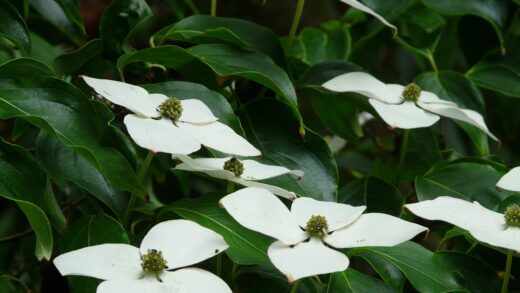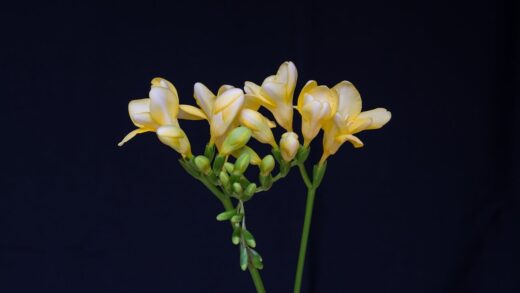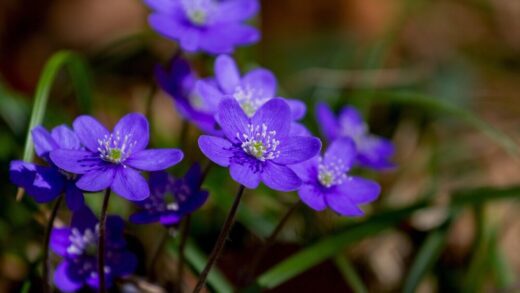The process of planting a new shrub is a hopeful act, laying the groundwork for years of future beauty, and with a resilient plant like the laurustinus, success is readily achievable with proper technique. Establishing this evergreen workhorse in your garden begins with thoughtful preparation, from choosing the right individual plant to meticulously preparing its new home in the soil. Equally rewarding is the art of propagation, the process of creating new plants from an existing one, which allows you to multiply your stock for other parts of the garden or to share with fellow enthusiasts. Mastering both planting and propagation ensures a lasting presence of this remarkable winter-flowering shrub in your landscape.
When selecting a laurustinus from a nursery or garden center, it is crucial to choose a healthy, well-formed specimen to give yourself the best possible start. Look for a plant with vibrant, deep green foliage, free from any signs of yellowing, spots, or pest damage. The overall shape should be bushy and balanced, with multiple stems emerging from the base, which indicates a strong and vigorous plant. Avoid specimens that look leggy, sparse, or have circling roots visible at the surface of the pot, as these may struggle to establish properly once planted in the garden.
The best time of year to plant your new laurustinus is in the autumn or spring. Autumn planting is often considered ideal as the soil is still warm from the summer, which encourages rapid root development before the onset of winter dormancy. This allows the plant to become well-established before it has to face the stresses of the following summer’s heat. Spring planting is also an excellent option, giving the plant a full growing season to settle in, but it may require more diligent watering during its first summer to ensure it doesn’t dry out.
Before you begin to dig, it is wise to position the containerized plant in its intended location for a day or two. This allows you to observe how the light falls in that spot throughout the day and confirm that it is indeed the right place for the shrub. It also gives the plant a chance to acclimatize to its new microenvironment before undergoing the stress of being transplanted. Taking this small, patient step can make a significant difference in how smoothly the plant transitions into its new permanent home.
The optimal planting procedure
Executing the planting process correctly is fundamental to the long-term health and vigor of your laurustinus. The goal is to create a welcoming environment for the roots to expand into, minimizing transplant shock and encouraging rapid establishment. This begins with digging a hole that is properly sized and preparing the soil to provide the ideal balance of drainage and moisture retention. Taking the time to perform these steps carefully will pay dividends in the form of a robust and resilient shrub.
More articles on this topic
Start by digging a planting hole that is approximately twice as wide as the plant’s root ball and just as deep. The width is more important than the depth, as the majority of a shrub’s roots will spread out horizontally in the upper layers of the soil. Digging a wide hole loosens the surrounding soil, making it easier for new roots to penetrate and explore their new environment. It is crucial not to dig the hole deeper than the root ball, as this can cause the plant to settle and sink over time, leading to water collecting around the crown and potential rot.
Once the hole is dug, it is time to assess and improve the backfill soil. If your soil is heavy clay or very sandy, this is the perfect opportunity to amend it with organic matter. Mix the soil you removed from the hole with a generous amount of compost, well-rotted manure, or leaf mold. This amendment will improve the structure of clay soils, enhancing drainage, and it will help sandy soils to retain more moisture and nutrients. This enriched backfill provides an ideal medium for the initial root growth.
Before placing the plant in the hole, carefully remove it from its container. If the roots are tightly packed or circling the bottom of the pot, gently tease them out with your fingers or make a few vertical cuts down the side of the root ball with a sharp knife. This encourages the roots to grow outwards into the surrounding soil rather than continuing to grow in a constricted circle. Place the plant in the center of the hole, ensuring that the top of the root ball is level with or slightly proud of the surrounding ground level, and then begin to backfill the amended soil around it, firming it gently to remove any large air pockets.
Initial care after planting
The care provided in the first few weeks and months after planting is critical for the successful establishment of your laurustinus. During this period, the shrub is vulnerable as its root system is still developing and is not yet able to efficiently access water and nutrients from a wide area of soil. Your primary role is to mitigate stress on the plant by providing consistent moisture and protection, allowing it to devote its energy to growing a strong, healthy root network. This early attention is an investment in the plant’s future resilience.
More articles on this topic
Immediately after planting, the most important task is to water the shrub thoroughly. This is not just to provide moisture but also to help settle the soil around the root ball, eliminating any remaining air pockets that could cause the roots to dry out. Create a shallow basin or “moat” of soil on the surface around the base of the plant to help direct water to the root zone and prevent runoff. Apply water slowly and deeply until the entire root ball and the surrounding soil are completely saturated.
For the first growing season, maintaining a consistent watering schedule is essential. Check the soil moisture every few days, especially during warm and dry periods, and water deeply whenever the top few inches of soil begin to feel dry. It is far more effective to water deeply and less frequently than it is to water lightly every day. Deep watering encourages the roots to grow deeper into the soil in search of moisture, which ultimately makes the plant more drought-tolerant and stable in the long run.
Applying a layer of organic mulch around the base of the newly planted laurustinus is another highly beneficial step. A two- to three-inch layer of wood chips, shredded bark, or compost will help to conserve soil moisture by reducing evaporation, suppress weed growth that would compete with the shrub for resources, and insulate the soil from extreme temperature fluctuations. Be sure to keep the mulch a few inches away from the main stems of the plant to prevent moisture from being trapped against the bark, which could lead to rot.
Propagation from cuttings
Propagating laurustinus from cuttings is an incredibly rewarding and cost-effective way to create new plants. This method, known as vegetative propagation, produces a new plant that is genetically identical to the parent, ensuring that desirable traits like flower color and growth habit are preserved. The most reliable method for this shrub is to take semi-hardwood cuttings, which are taken from the current season’s growth that has started to mature and become woody but is not yet fully hardened. This process is straightforward and requires only a few basic tools.
The ideal time to take semi-hardwood cuttings from a laurustinus is from mid-summer to early autumn. At this point in the season, the new shoots are at the perfect stage of maturity—firm enough to avoid rotting but still young enough to form new roots readily. Select healthy, vigorous, and non-flowering shoots from the parent plant for the best chance of success. Using a sharp, clean pair of secateurs or a knife, cut a section of stem that is about four to six inches long, making the cut just below a leaf node (the point where a leaf emerges from the stem).
Once you have your cutting, you need to prepare it for rooting. Carefully strip off the leaves from the lower half of the stem, leaving just two or three pairs of leaves at the top. This reduces the amount of water lost through transpiration and allows the cutting to focus its energy on root production. If the remaining leaves are very large, you can cut them in half horizontally to further reduce moisture loss. Finally, you may dip the bottom end of the cutting into a rooting hormone powder or gel, which can help to stimulate faster and more reliable root development.
Now the cutting is ready to be planted. Fill a small pot with a well-draining rooting medium, such as a 50/50 mix of perlite and compost or coarse sand and peat. Use a pencil or a dibber to make a hole in the medium, then insert the cutting so that about half of its length is buried. Firm the medium gently around the cutting and water it lightly. To create a humid microclimate that encourages rooting, you can cover the pot with a clear plastic bag or place it in a propagator. Position the pot in a warm, bright location out of direct sunlight and keep the medium consistently moist until roots have formed, which typically takes several weeks.
Alternative propagation methods
While taking semi-hardwood cuttings is the most common and reliable method for propagating laurustinus, there are alternative techniques that can also be successful, offering different approaches for the adventurous gardener. One such method is layering, which is a simple and effective way to propagate a new plant while it is still attached to the parent. This technique requires minimal equipment and has a high success rate because the new plant receives nutrients and water from the parent until it has formed its own sufficient root system.
To propagate by layering, select a long, flexible, low-growing branch in the spring or autumn. Carefully bend this branch down to the ground without detaching it from the parent plant. At a point on the stem that makes contact with the soil, about a foot from the tip, make a small wound by gently scraping away a small section of the bark or making a shallow, angled cut. This wounding encourages root formation at that specific point.
Once the stem is wounded, you can apply a small amount of rooting hormone to the area to speed up the process, although it is not strictly necessary. Dig a shallow trench in the soil beneath the wounded section of the stem and bury it, securing it in place with a bent piece of wire or a heavy stone. The tip of the branch should be left exposed and pointing upwards, and it can be tied to a small stake to encourage it to grow vertically. Keep the soil around the buried section consistently moist.
Over the following months, the buried and wounded part of the stem will begin to develop its own root system. You can check for rooting by gently tugging on the layered stem; if you feel resistance, it means roots have formed. It typically takes about a year for a strong enough root system to develop. Once it is well-rooted, you can use a sharp pair of secateurs to sever the new plant from its parent, and then carefully dig it up and transplant it to its new location in the garden.




















